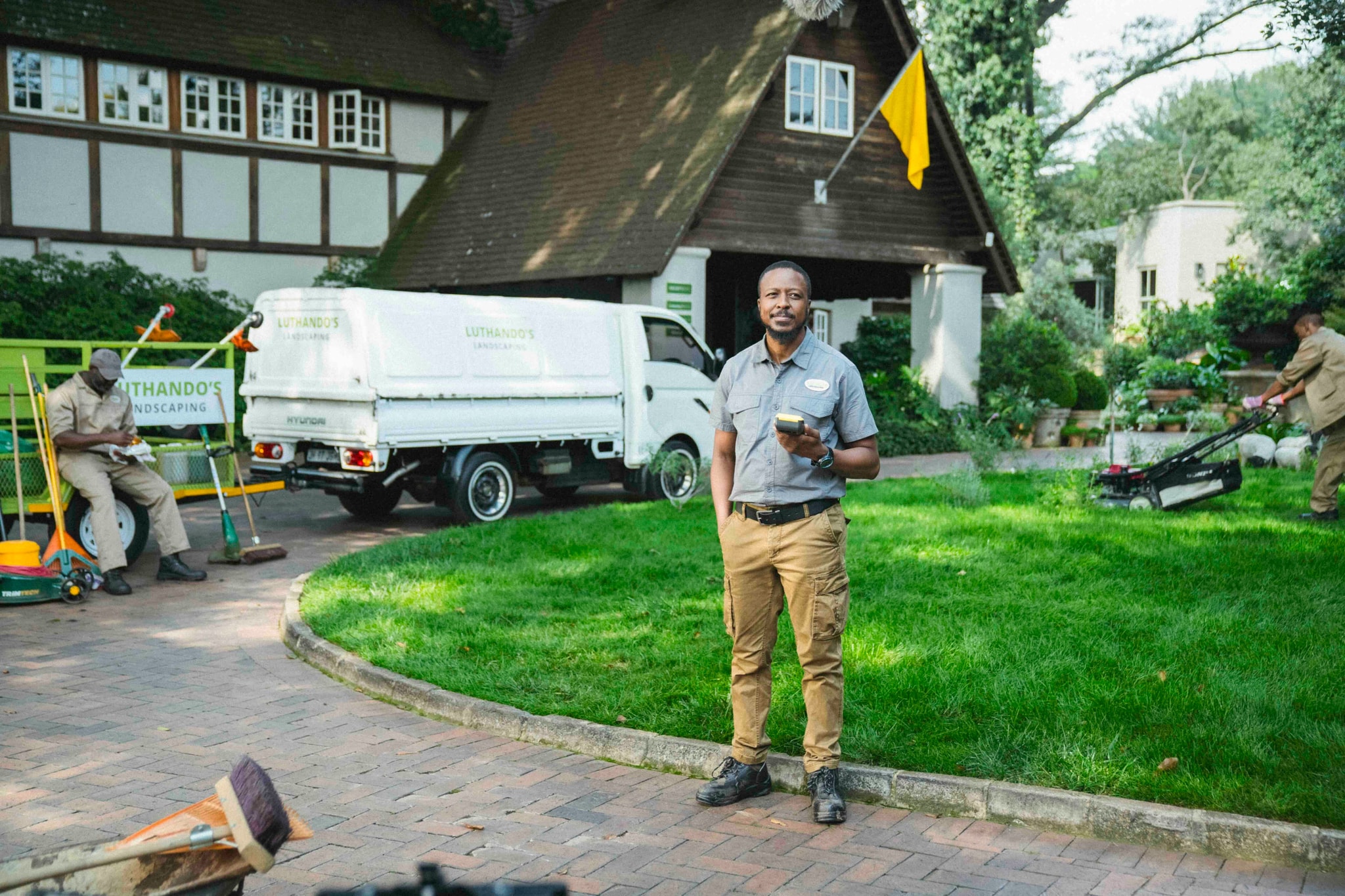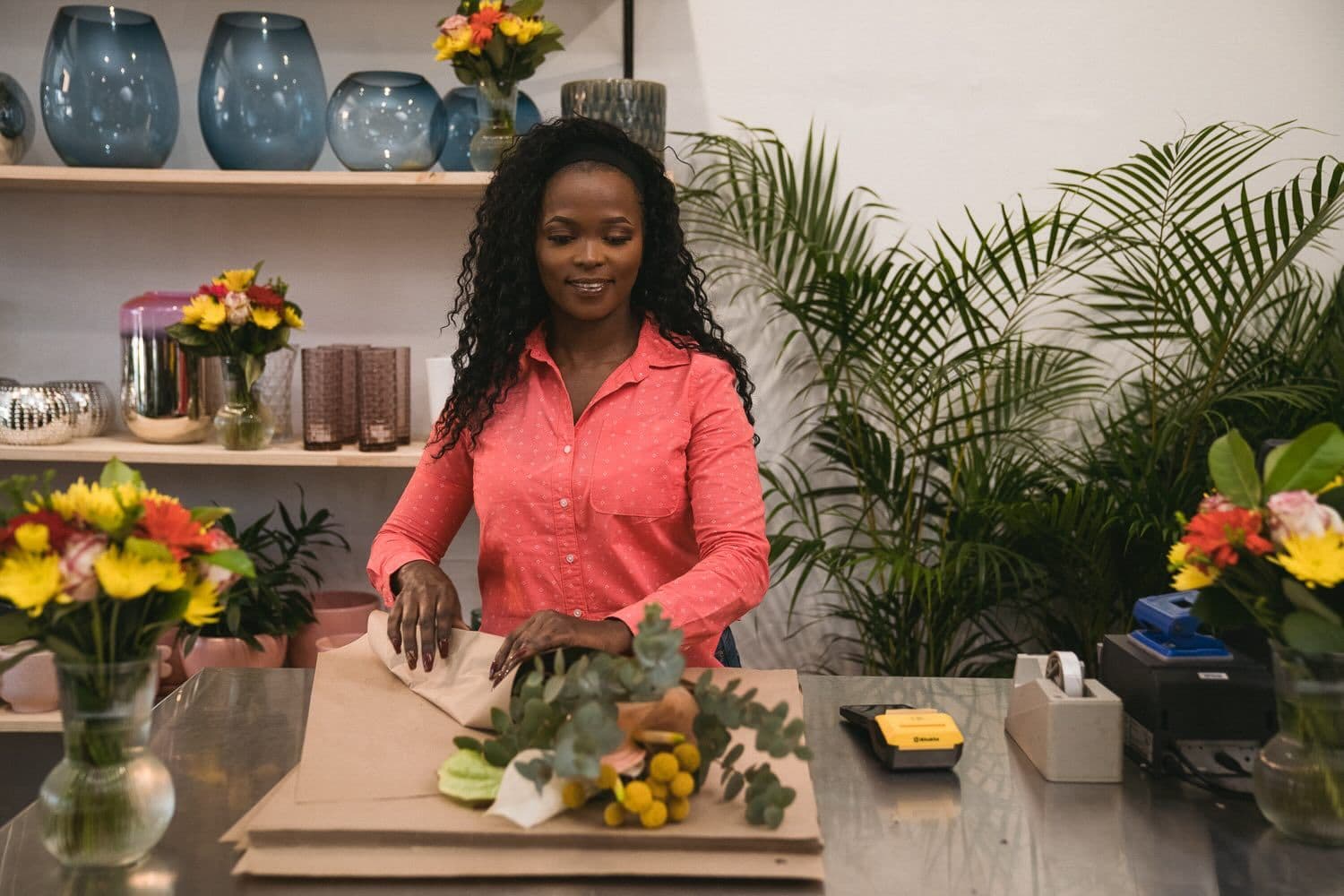
How to Start a Gardening Business in South Africa
Learn how to start a garden service business in South Africa with clear costs, simple steps, pricing guidance and practical advice for landing your first clients.
Table of Contents
- Introduction
- Why gardening businesses thrive in South Africa
- Decide what type of gardening business you want to start
- Garden service business (most common starting point)
- Small landscaping or planting work
- Growing and selling plants
- Work with what you already have
- Choose a name and register your business
- Set realistic start-up costs
- Learn how to price your services
- Find your first clients
- Make getting paid easy
- Build your routine and protect your body
- Grow your business naturally
- Keep learning and improving
- How much can you earn?
- Mistakes gardeners make
- Building trust and keep clients long term
- Where most gardeners go from here
Gardens play a bigger role in South African life than we often realise. They’re where kids run around after school, where families sit on warm evenings and where people catch a bit of quiet on busy weekends. No matter if you’re in Durban’s humidity, Joburg’s winter air or the Cape’s long summer evenings, something is always growing somewhere.
Because of that, there’s always a yard that needs attention. Lawns get overgrown, beds fill with weeds, hedges lose their shape and not everyone has the time or energy to keep things under control. If you enjoy being outdoors and don’t mind a bit of physical work, a gardening business can fit naturally into your life. You don’t need a fancy qualification and you don’t need deep pockets to begin. Many people start with what they already have and build their way into it.
So if you’ve been thinking about offering garden services or even growing plants to sell one day, here’s a clear, practical look at how to start a gardening business in South Africa, without overcomplicating the process.
Why gardening businesses thrive in South Africa
South Africans spend a lot of time outside, so a neat garden matters more than people admit. A tidy lawn or well-kept bed makes a place feel cared for, but life gets busy and not everyone has the time or energy to keep up with it. That’s usually when they call someone in to help.
Our climate also keeps gardeners busy all year. Grass doesn’t wait for winter to pass and the summer rains make everything shoot up overnight. So the work doesn’t really slow down, and once you’ve helped someone a few times, they often become a regular.
What also helps is how flexible this kind of work is. You can take on a few gardens after hours or on weekends and continue to build from there. When people see you’re reliable, they tend to stick with you and they’ll usually tell others too.
Decide what type of gardening business you want to start
There isn’t one specific path into gardening. You can shape your offering based on what feels natural to you.
Garden service business (most common starting point)
This includes mowing lawns, raking, trimming edges and general upkeep. It’s the simplest way to begin, especially if you're searching for how to start a garden service business without spending much upfront.
Clients usually need this service weekly or monthly, so it builds a steady rhythm.
Small landscaping or planting work
If you’re comfortable with plants or enjoy creating tidy, beautiful spaces, offering light landscaping can bring in higher-paying jobs. This might include:
- Refreshing flower beds
- Planting shrubs
- Seasonal clean-outs
- Helping redesign neglected areas
You don’t need to be a landscaping pro. Many clients simply want someone who understands plants and has a good eye.
Growing and selling plants
If the idea of growing and selling plants interests you, you’d be surprised at how simple the first steps are. You don’t need a greenhouse or anything fancy like that. A lot of people start with basic seedlings or hardy little plants on a table in the yard. Those can sell quickly to neighbours and your gardening clients often pick some up too.
It’s one of those things you can slide into without much pressure. Try a few plants, see what people like and go from there. You can mix it with your garden services or keep it separate, whatever feels right for you.
Work with what you already have
Most people kick off with whatever tools they already have lying around. Maybe you’ve got a rake somewhere in the back room or just a spade. Even if your kit is a bit mismatched, it can still be enough to get the job done at the start. And if you need something extra, borrowing is completely normal, everyone does it in the beginning.
For the bigger things like a mower, you can just rent one for a day - hardware stores and tool hire spots usually have decent options and it saves you from buying something you’re not ready for yet.
Once you’ve made a bit of money, you can upgrade slowly like better gloves, shoes that handle long days or maybe a reliable pair of shears. It doesn’t need to happen all at once. And keeping your tools clean and organised makes you look prepared, even if you’re still piecing your kit together.
If you’re unsure what you’ll eventually need, take a quick walk through a garden centre. Even jotting down prices can help you figure out what’s realistic now and what you can add later.
Choose a name and register your business
When you’re ready to give this a proper go, it helps to have a name people can actually remember. Try to keep it short and easy to say - something that tells people what you do without feeling forced. Think along the lines of “Green Hands,” “Mow and Grow,” or “Urban Roots,” but choose something that feels like you.
Try not to overthink it. A clear name just makes it easier for people to pass your details on.
When you’ve found a name you like, you can register your business on the CIPC website. Registration takes only a few days and it opens doors to bigger clients such as complexes, schools or office parks that prefer dealing with registered service providers.
It’s also worth opening a separate business bank account. This helps you track income, manage cash flow and makes you look more professional when sending invoices.
Set realistic start-up costs
Once the admin side is out of the way, the next thing people usually think about is cost. And thankfully, gardening isn’t one of those businesses that demands a massive investment upfront. If you already have a few basic tools at home, you can get started without spending too much and if you’re buying new equipment, you’ll spend a bit more, but it’s still manageable compared to most other trades.
A mower or brush cutter is usually the biggest expense. After that, it’s simple things like a rake, gloves, a broom, sun protection and enough money for fuel or taxis. You don’t need to buy everything at once. Add tools as the work builds and you’ll quickly figure out what’s worth investing in and what can wait.
Learn how to price your services
Once you’ve got your tools sorted, you’ll need to think about pricing. It feels strange in the beginning, but you get the hang of it quickly.
The idea is to charge enough to cover your time and transport without surprising your client. In most areas, gardeners charge somewhere between R250 and R600 for a standard home visit, depending on the size of the yard and how much work is involved. Your bigger properties like schools or office parks usually fall into a different bracket.
When you quote, simply explain what’s included. If you’re mowing, trimming and removing the waste, mention that upfront. Extras like planting or fertilising can just be added separately. Every neighbourhood is different, so take a look at what others are charging and use it as a guide. You’ll find your rhythm quickly.
Find your first clients
Most gardening work starts close to home. Let people in your street or community know you’re taking on gardens and you’ll be surprised how quickly the first few jobs appear. These early clients often become your regulars if you’re consistent.
Being on time and doing neat work can make a big difference. After the job, ask if everything looks good and, if they’re comfortable, if they’d mind sharing your number. A quick mention on a WhatsApp group or a short Facebook review can help you reach more people.
If you can, set up a simple online page with photos and your contact details, something easy for people to share or a WhatsApp Business account or Facebook page with your name, contact details and photos of your work can do wonders.
List your business on Google Maps too. That way, when someone nearby searches for “garden service near me,” you’ll actually appear in the results.
Make getting paid easy
Cash can be risky and chasing payments takes time you could spend working. The quicker and simpler you make payments, the smoother your business will run.
With iKhokha, you can handle everything from your phone:
- iK Tap on Phone lets clients pay by tapping their bank card directly on your smartphone.
- iK Pay Link allows you to send a quick payment link through WhatsApp or SMS. Connect it to your iK Invoice too to help get paid quicker.
- iK Invoice helps you send professional digital invoices with a built-in pay button.
Fast payments mean no delays and fewer awkward conversations about money. It also makes you look modern and reliable which is exactly how clients like to work.
Build your routine and protect your body
The work can be tough on your body, so it helps to organise your days in a way that makes sense. Try to group clients by area so you’re not driving back and forth all day. Keeping a simple list of who you’re seeing and when they prefer you to come makes planning a lot easier.
Your tools also need attention. Give your mower a quick clean, check the blades now and then, and replace anything that’s clearly worn out. It saves you from breakdowns in the middle of a job. And look after yourself too, gloves, proper lifting and the occasional stretch can go a long way.
When both you and your tools are in good shape, the work feels lighter and your days run more smoothly.
Grow your business naturally
Once you’ve got regular clients, it’s time to think about growth. You can do this in a few ways.
You could hire a helper and take on more work. You could offer small landscaping or planting projects for clients who want a garden refresh. Or, if you’ve got the space and patience, you could start your own nursery at home growing herbs, flowers, or shrubs to sell to your existing clients.
Starting small with seedlings or potted plants is a great way to earn extra money and attract new customers. When people see the plants thriving in your care, they’ll want to buy them. Over time, your garden service and nursery can support each other.
That’s how many South Africans grow their side hustle into a real, sustainable business.
Keep learning and improving
The more gardens you work in, the more you will realise how different they all are. Soil changes from suburb to suburb, plants behave differently in each climate and clients all have their own preferences. You don’t need to know everything on day one, but it helps to stay curious.
Pay attention to what grows well in your area, keep an eye on water rules when they change and take note of which plants handle heat or cold better. You can learn a lot just by chatting to other gardeners, reading a few local guides or watching short videos online. If you ever feel like doing something more formal, there are affordable horticulture and landscaping courses at community colleges.
Little bits of learning really do add up and they help you do the job with more confidence and give better advice when clients ask for guidance.
How much can you earn?
A solo gardener working part-time can earn between R10 000 and R20 000 per month. With a small team or more clients, that number can grow quickly.
Your earnings will depend on your area, efficiency and how consistent you are with your schedule. The more organised your routine, the more gardens you can service without compromising quality.
It can take a bit of time before your weeks feel full, but most gardeners build steady work through repeat clients and word-of-mouth. People notice good work, and that’s usually what brings the next job.
Mistakes gardeners make
A few things commonly trip people up at the start: undercharging, skipping safety gear, and letting tools wear out before fixing them. Another one is not confirming appointments, even a quick message can save a lot of back-and-forth.
These things happen to almost everyone. Once you’ve worked a few weeks, you’ll spot them early and handle them without much effort.
Building trust and keep clients long term
Once you’ve figured out the common stumbling blocks, it becomes more about how you deal with the people you work for. Clients notice when you keep them in the loop, when you treat their space with care and when you follow through on what you said you’d do. These small things matter more than perfect edging or the straightest mow lines.
A quick message before you arrive or a short check-in after the job is done goes a long way. It shows you’re organised and that you respect their home. That’s usually what turns a once-off yard clean into a regular booking.
Where most gardeners go from here
Starting a gardening business in South Africa isn’t about luck, it’s about showing up and doing quality work. Every patch of soil is an opportunity.
After a few months of doing the work, you’ll start recognising patterns, which clients book regularly, which jobs you prefer and what your week normally looks like. Things feel a lot smoother once you’ve reached that stage.
Many gardeners eventually look for simple ways to keep track of who owes what, which jobs are done and which ones still need attention. That’s where something like iKhokha is useful because it keeps all the admin in one place without adding extra effort.
There’s no set direction you have to follow after this; you shape things in a way that fits your life.
FAQs
If you’re buying everything from scratch, the cost will be a bit higher but still manageable. Renting or borrowing bigger items like lawnmowers or brush cutters is a common way to save money when you’re just starting a garden service business.
- Lawn mowing
- Trimming and edging
- Clearing garden beds
- Removing garden waste
- Neighbours
- Local markets
- Your gardening clients
- Community groups
Basic knowledge of soil, plant care, seasonal gardening and water restrictions will help you deliver better results, but you can learn much of this through short courses, local gardening groups and online resources.
You can also send secure iK Pay Links for clients who prefer paying digitally or through WhatsApp. These options make payments quick and remove the need to carry cash.





















